Choose your remedies carefully
There are many approaches to stretching tight back muscles that involve rounding the back. Though these exercises give temporary relief, we recommend against them because they threaten the spinal discs, nerves, and ligaments. They can also result in the back muscles contracting even more tightly to stabilize the area.
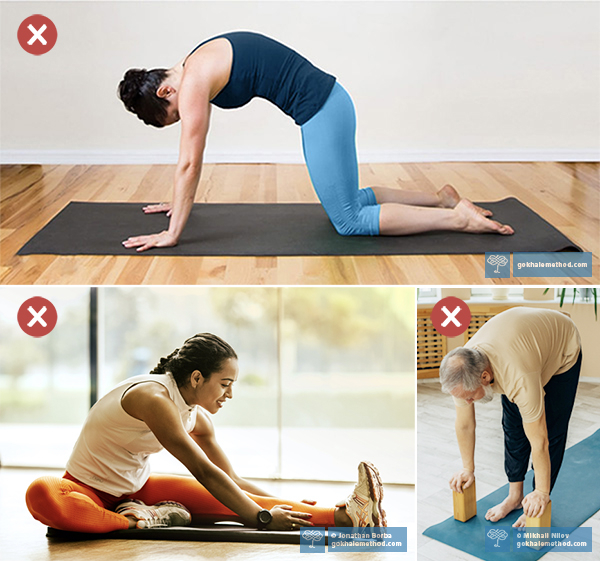
Rounded stretching exercises increase existing upper back curvature (hunching) while pulling aggressively on tight soft tissues and ligaments. Our tissues respond better to sustained, gentle realignment to make healthy changes. Pexels
By contrast, the Gokhale Method rib anchor maneuver brings relief from compression without any negative side effects. It restores your spine to a healthy J-shape, preserving the spinal discs, nerves, and ligaments. Over time, this alignment encourages a more natural, relaxed baseline tone in your back muscles as well as better abdominal tone.
How your rib anchor works
Rib anchor describes the pivot of the rib cage around a horizontal axis at about breast height, bringing the lower border of the front of the rib cage in and down thus sending the back of the rib cage up and out. Since the back of the ribs are attached to the vertebrae, this pulls the curvy “necklace” of the lumbar spine into a flatter, longer arrangement. This means of tractioning the lower spine is a fundamental Gokhale Method technique for removing sway. It restores healthy length in the lumbar area, alleviating compression of the discs, nerves, and vertebrae.
a. b.
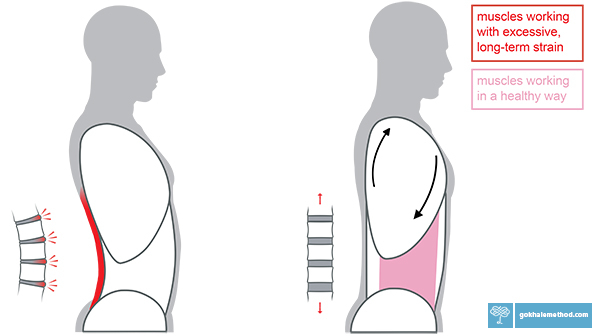
A forward pivot of the rib cage at breast height (b.) corrects for a tight lower back (a.), restoring lumbar length. Maintaining this orientation requires the abdominal muscles that anchor the ribs down to develop a healthy baseline tone.
The art of transmission
Over many years of hands-on work helping students with their rib anchor, I became increasingly aware of an intuitive sequence of moves in what I was doing. My hands could guide a student to a pleasing endpoint, but what exactly I was doing fell short of verbal description and a conceptual framework. The gap between what we were doing and articulating in words showed up especially when our teachers got together for continuing education offerings, when questions and case studies were discussed. There was a need for new language, fresh insights, and deeper understanding. While teaching posture is both an art and a science, it is also a hallmark of our method that there be kinesthetic, visual, and intellectual understanding of our process; this takes the right words and analogies.
A fresh analogy for the rib anchor
For a very long time, we’ve taught three things that need to happen to help most people find a healthy head position. It’s a combination of:
- Pivoting around an axis from ear to ear
- Lengthening the neck through relaxing certain muscles and recruiting others (especially the longus colli)
- Shearing the head and neck gently back
1. 2. 3.
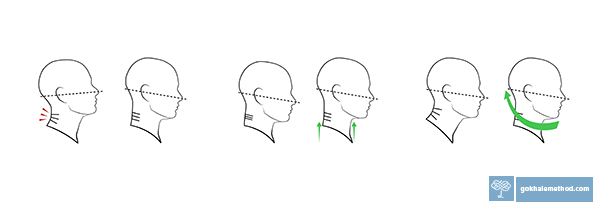
Gliding the rib cage home follows a similar pattern:
- Pivoting around an axis that goes from side to side through the chest at about breast level (this being the main component of what I’ve described as rib anchor so far)
- Relaxing the erector spinae and other muscles and recruiting the deep abdominal and back muscles (inner corset) to create additional length in the back, as described and included in our teachings
- Shearing the ribcage backward relative to the pelvis. This is the movement that I’d been intuitively weaving into my hands-on ministrations that previously wasn’t well described
When students aligned their ribs by only pivoting the rib cage, I could see that it sometimes resulted in an awkward movement that did not integrate the rib cage into the torso quite right. Adding, and even better with practice, integrating this element of shear, transformed their outcome and experience.
We can describe the shear element, for both the head and the rib cage, as analogous with backing your car into its garage:
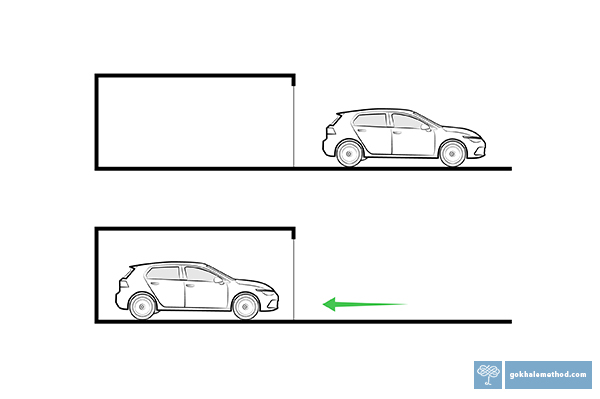
An analogy that is true and versatile
Neat and easy parallels can, of course, be seductive but false. However, here we have a really useful and accurate analogy of what needs to happen. Deploying your rib anchor to come into a healthier orientation usually feels somewhat strange at first—especially if you have spent years actually leaning backwards from your waist—but this new analogy is already helping our students to enjoy a more buoyant uprightness, and less of a leaning forward sensation.
This “backing up” of the ribcage can be tailored to affect different levels of the spine, as appropriate for each person. And while every body is a unique landscape known only to its owner, a teacher’s guidance is always available to help you map it out sooner.
a. b.
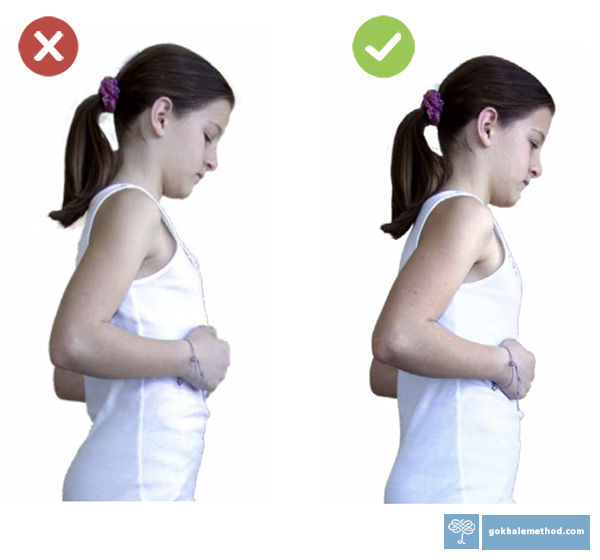
This girl (a.) stands with her lower back swayed. Her rib cage is angled back, and she can feel her lower front ribs popping up under her hands. She gently but firmly presses on her ribcage to “back it into the garage” and into a healthy alignment (b.), removing the sway in her lower back as she does so.
Best next action steps
If you are new to the Gokhale Method, are resuming your posture journey after a little while, or struggle with your rib anchor, book a consultation, online, or in person with one of our teachers, who will be happy to help.
You can sign up below to join one of our upcoming FREE Online Workshops. . .


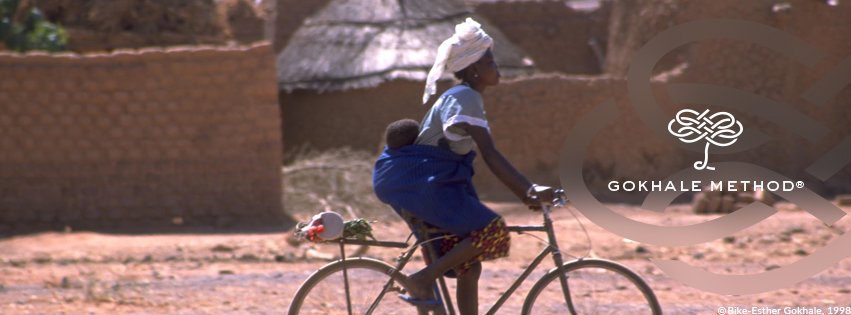
Comments
Thank you ! This was so
Thank you ! This was so informative, and actually made the rib anchor maneuver much clearer. Could you clarify if the whole ribcage should slide back or the just the bottom part of it please ?
Everybody needs a different
Everybody needs a different mix of pivot, shear, and length, so the answer will vary according to what the person's beginning position is.
Illustrations and verbal
Illustrations and verbal clues are very helpful. One question: Once the ribcage is aligned, does it remain fixed throughout the breathing process? And what about the head?
Nothing in the body is
Nothing in the body is entirely "fixed." The rib cage moves in multiple ways during breathing. Even the head moves a little with the spine lengthening during breathing.
Thanks. I see the need for
Thanks. I see the need for basic flexibility. I ask the question because it seems to me that if I try to maintain the alignment while inhaling, that promotes lengthening of the spine and lateral expansion of the ribcage. Is that a good approach?
Yes!
Yes!
This information is life
This information is life-changing! I can’t begin to thank you for sharing. I’ve had back pain for most of my adult life and this tweak seems to relieve it.
Can you provide more specifics for the shear/pivot if the back pain is from lumbar herniated discs? (L4/L5, L5/S1 with sciatic pain down the leg.)
Ps I will go see a Gokhale practitioner, just thought I could try it out myself first.
Can you provide more
Can you provide more specifics for the shear/pivot if the back pain is from lumbar herniated discs? (L4/L5, L5/S1 with sciatic pain down the leg.)
Ps I will go see a Gokhale practitioner, just thought I could try it out myself first.
What we provide is education, not treatment. Our experts are teachers, not practitioners. It just happens that what we teach addresses a large variety of aches, pains, and disability.
So yes, do go see one of our teachers. You will learn things relevant to your particular situation (that could not be fully described in a blog); hopefully, you, like most of our students, will experience relief from your challenges.
I believe that if you work
I believe that if you work hard and practice your way, everyone will have a beautiful body. aa route planner